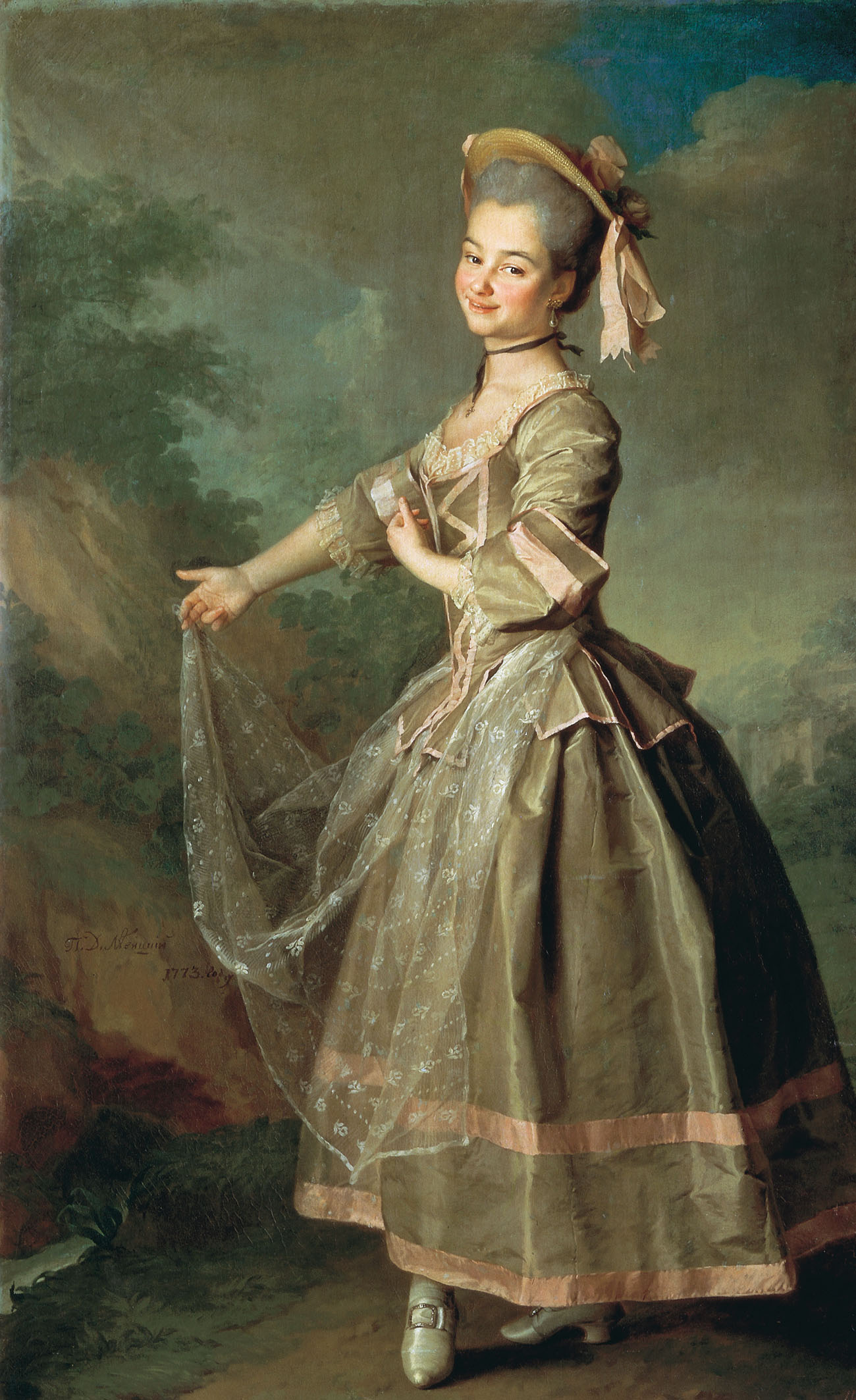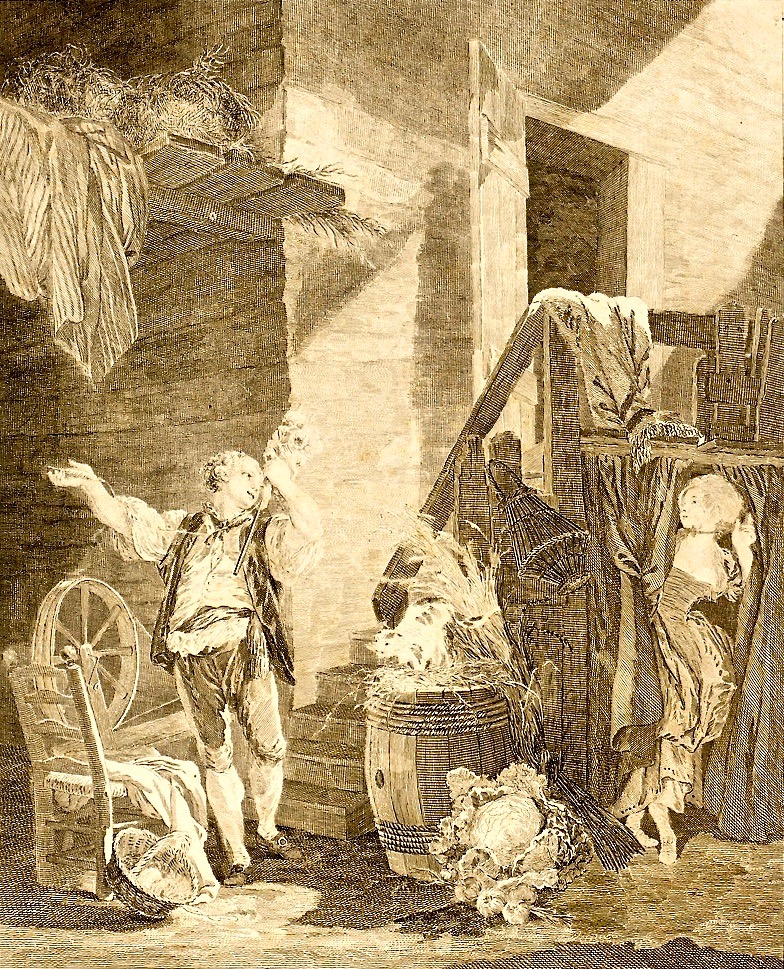|
Pierre-Alexandre Monsigny
Pierre-Alexandre Monsigny ( – ) was a French composer and a member of the French Académie des Beaux-Arts (1813). He is considered alongside André Grétry and François-André Danican Philidor to have been the founder of a new musical genre, the ''opéra comique'', laying a path for other French composers such as François-Adrien Boieldieu, Daniel-François-Esprit Auber, Charles Gounod, Georges Bizet, and Jules Massenet in this genre. Biography Pierre-Alexandre Monsigny was born at Fauquembergues, near Saint-Omer, in the former Artois region of France (now Pas-de-Calais), four months before the marriage of his parents, Marie-Antoinette Dufresne and Nicolas Monsigny. He was educated at the Walloon Collége des Jésuites in Saint-Omer. It was here that he first discovered his aptitude for music. As the eldest child, in 1749, a few months after his father's death, he left for Paris with only a few coins in his pocket, a violin and a recommendation letter, in an attempt to fur ... [...More Info...] [...Related Items...] OR: [Wikipedia] [Google] [Baidu] |
WikiProject Composers
A WikiProject, or Wikiproject, is a Wikimedia movement affinity group for contributors with shared goals. WikiProjects are prevalent within the largest wiki, Wikipedia, and exist to varying degrees within Wikimedia project, sister projects such as Wiktionary, Wikiquote, Wikidata, and Wikisource. They also exist in different languages, and translation of articles is a form of their collaboration. During the COVID-19 pandemic, CBS News noted the role of Wikipedia's WikiProject Medicine in maintaining the accuracy of articles related to the disease. Another WikiProject that has drawn attention is WikiProject Women Scientists, which was profiled by ''Smithsonian Magazine, Smithsonian'' for its efforts to improve coverage of women scientists which the profile noted had "helped increase the number of female scientists on Wikipedia from around 1,600 to over 5,000". On Wikipedia Some Wikipedia WikiProjects are substantial enough to engage in cooperative activities with outside organization ... [...More Info...] [...Related Items...] OR: [Wikipedia] [Google] [Baidu] |
La Serva Padrona
''La serva padrona'', or ''The Maid Turned Mistress'', is a 1733 intermezzo by Giovanni Battista Pergolesi (1710–1736) to a libretto by Gennaro Federico, after the play by Jacopo Angello Nelli. It is some 40 minutes long, in two parts without overture, and was written as light-hearted staged entertainment between the acts of Pergolesi's serious opera ''Il prigionier superbo''. More specifically each of the two parts, set in the same dressing room, played during an intermission of the three-act opera to amuse people who remained in their seats. Federico's libretto was also set by Giovanni Paisiello, in 1781. Performance history ''La serva padrona'' and the opera seria it punctuates were premiered at the Teatro San Bartolomeo on 5 September 1733, the first performances there after an earthquake the previous year in Naples had closed all theatres. Both were written for the birthday of Holy Roman Empress Elisabeth Christine of Brunswick-Wolfenbüttel a few days earlier. ''Il prig ... [...More Info...] [...Related Items...] OR: [Wikipedia] [Google] [Baidu] |
Opéra-Comique
The Opéra-Comique is a Paris opera company which was founded around 1714 by some of the popular theatres of the Parisian fairs. In 1762 the company was merged with – and for a time took the name of – its chief rival, the Comédie-Italienne at the Hôtel de Bourgogne. It was also called the Théâtre-Italien up to about 1793, when it again became most commonly known as the Opéra-Comique. Today the company's official name is Théâtre national de l'Opéra-Comique, and its theatre, with a capacity of around 1,248 seats, sometimes referred to as the Salle Favart (the third on this site), is located at Place Boïeldieu in the 2nd arrondissement of Paris, not far from the Palais Garnier, one of the theatres of the Paris Opéra. The musicians and others associated with the Opéra-Comique have made important contributions to operatic history and tradition in France and to French opera. Its current mission is to reconnect with its history and discover its unique repertoire to ensu ... [...More Info...] [...Related Items...] OR: [Wikipedia] [Google] [Baidu] |
Reign Of Terror
The Reign of Terror (french: link=no, la Terreur) was a period of the French Revolution when, following the creation of the First Republic, a series of massacres and numerous public executions took place in response to revolutionary fervour, anticlerical sentiment, and accusations of treason by the Committee of Public Safety. There is disagreement among historians over when exactly "the Terror" began. Some consider it to have begun only in 1793, giving the date as either 5 September, June or March, when the Revolutionary Tribunal came into existence. Others, however, cite the earlier time of the September Massacres in 1792, or even July 1789, when the first killing of the revolution occurred. The term "Terror" being used to describe the period was introduced by the Thermidorian Reaction who took power after the fall of Maximilien Robespierre in July 1794, to discredit Robespierre and justify their actions. Today there is consensus amongst historians that the exceptional revo ... [...More Info...] [...Related Items...] OR: [Wikipedia] [Google] [Baidu] |
French Revolution
The French Revolution ( ) was a period of radical political and societal change in France that began with the Estates General of 1789 and ended with the formation of the French Consulate in November 1799. Many of its ideas are considered fundamental principles of liberal democracy, while phrases like ''liberté, égalité, fraternité'' reappeared in other revolts, such as the 1917 Russian Revolution, and inspired campaigns for the abolition of slavery and universal suffrage. The values and institutions it created dominate French politics to this day. Its causes are generally agreed to be a combination of social, political and economic factors, which the ''Ancien Régime'' proved unable to manage. In May 1789, widespread social distress led to the convocation of the Estates General, which was converted into a National Assembly in June. Continuing unrest culminated in the Storming of the Bastille on 14 July, which led to a series of radical measures by the Assembly, i ... [...More Info...] [...Related Items...] OR: [Wikipedia] [Google] [Baidu] |
Louis Philippe I, Duke Of Orléans
Louis Philippe d'Orléans known as ''le Gros'' (''the Fat'') (12 May 1725 – 18 November 1785), was a French prince, a member of a cadet branch of the House of Bourbon, the royal dynasty that ruled France. The First Prince of the Blood after 1752, he was the most senior male at the French court after the immediate royal family. He was the father of ''Philippe Égalité''. He greatly augmented the already huge wealth of the House of Orléans. Biography ''Louis Philippe d'Orléans'' was born at the Palace of Versailles on 12 May 1725. As the only son of Louis d'Orléans, Duke of Orléans and his wife Johanna of Baden-Baden, he was titled Duke of Chartres at birth. He was one of two children; his younger sister Louise Marie d'Orléans died at Saint-Cloud in 1728 aged a year and eight months. His father, who had been devoted to his German wife became a recluse and pious as he grew older. Louise Marie was known as '' Mademoiselle'' in her short lifetime. Louis Philippe was ... [...More Info...] [...Related Items...] OR: [Wikipedia] [Google] [Baidu] |
Charles Collé
Charles Collé (14 April 1709 – 3 November 1783) was a French dramatist and songwriter. Biography The son of a notary, he was born in Paris. He became interested in the rhymes of Jean Heguanier, the most famous writer of couplets in Paris. From a notary's office, Collé was transferred to that of the receiver-general of finance, where he remained for nearly twenty years. When about seventeen, however, he made the acquaintance of Alexis Piron, and afterwards, through Gallet (1698?–1757), of Panard. The example of these three masters of the vaudeville decided his future but also made him diffident; and for some time he composed nothing but ''amphigouris''—verses whose merit was measured by their unintelligibility. The friendship of the younger Crébillon helped broaden his horizons, and the establishment in 1729 of the famous "Société du Caveau", a drinking-club known for its wit and good company, gave him a field for the display of his fine talent for popular song. In 1 ... [...More Info...] [...Related Items...] OR: [Wikipedia] [Google] [Baidu] |
Aline, Reine De Golconde
''Aline, reine de Golconde'' (‘Aline, Queen of Golconda’) is an opera (ballet-héroïque) in three acts by Pierre-Alexandre Monsigny to a libretto by Michel-Jean Sedaine based on a story by Stanislas-Jean de Boufflers. It was first performed in the Salle des Machines in Paris on 15 April 1766. Action The action takes place in India, where queen Aline recognises the newly arrived ambassador Saint Phar as her long lost lover from a time when she was a mere peasant girl. She disguises herself as a shepherdess and meets Saint Phar before leaving him again to test his love. Resuming her role as queen, she offers herself in marriage to Saint Phar, who declines because he loves the shepherdess. The true identity of the shepherdess is then revealed, and the lovers reunited. Reception Although Monsigny had previously written light operas, ''Aline'' was his first and only grand opera. The ''Journal historique'' gave the work a damning review, saying that Sédaine's libretto lacked th ... [...More Info...] [...Related Items...] OR: [Wikipedia] [Google] [Baidu] |
Rose Et Colas
''Rose et Colas'' is a French opéra-comique in 3 acts by Michel-Jean Sedaine, music by Pierre-Alexandre Monsigny, first performed on the Théâtre-Français at the Hôtel de Bourgogne on 8 March 1764. on bruzanemediabase ''Rose et Colas'' is mentioned by Honoré de Balzac in the short story '' Une double famille
''Une double famille'' (''A Second Home'') is a lengthy short story by Honoré de Balzac. The story first appeared in 1830 under the title ''La femme vertueuse'' (''The Virtuous Woman''). It was subsequently published in 1832 by Mame et Delaunay a ... '' (1830). The Lord of Granvi ...
[...More Info...] [...Related Items...] OR: [Wikipedia] [Google] [Baidu] |
Michel-Jean Sedaine
Michel-Jean Sedaine (2 June 1719 – 17 May 1797) was a French dramatist and librettist, especially noted for his librettos for '' opéras comiques'', in which he took an important and influential role in the advancement of the genre from the period of Charles-Simon Favart to the beginning of the Revolution.Charlton 1992, p. 297. Early life Sedaine was born in Paris. His father, an architect, died when Sedaine was quite young and left no fortune to inherit, the young Sedaine therefore began life as a mason's labourer. He was at last taken as pupil by an architect whose kindness he eventually repaid, by the help he was able to give to his benefactor's grandson, the painter David. Meanwhile, he had done his best to repair his deficiencies of education, and in 1750 he published a ''Recueil de pièces fugitives'', which included fables, songs and pastorals. Writer of opéras comiques Sedaine's especial talent was, however, for light opera. He wrote ''Le diable à quatre'', set ... [...More Info...] [...Related Items...] OR: [Wikipedia] [Google] [Baidu] |
Pierre-René Lemonnier
Pierre-René Lemonnier (1731, Paris – 8 January 1796, Metz) was an 18th-century French playwright and librettist. Works *1760: ''Vaudeville des Pèlerins de la Courtille'', (parodie des Paladins). N, -B. Duchesne, in-8. *1760: ''Le Maitre en droit'', opéra comique in two acts (and in prose) mingled with ariettes, Duchesne, in-8° ; or Paris, Christophe Ballard, 1762, in-8°. *1761: ''Le cadi dupé'', opéra comique in one act (and in prose) mingled with ariettes. By the author of « Maitre en droit », Duchesne, in-8°. *1764: ''Les Dieux réunis, ou la Fête des Muses'', prologue (in one act and in verse), and ''le Tuteur amoureux'', comedy in two acts and in verse, mingled with ariettes (in French and in Spanish). Madrid, D. Antonio Munoz del Valle, in-4°. *1768: ''Le Mariage clandestin'', comedy in three acts and in free verse, Amsterdam and Paris, Lejay, in-8.(Beuchot erroneously says in the ''Biographie universelle'', that this play, imitated from English by Garrick Gar ... [...More Info...] [...Related Items...] OR: [Wikipedia] [Google] [Baidu] |




%2C_depicted_as_the_goddess_Hebe_by_Nattier_(Metropolitan_Museum_of_Art).jpg)

